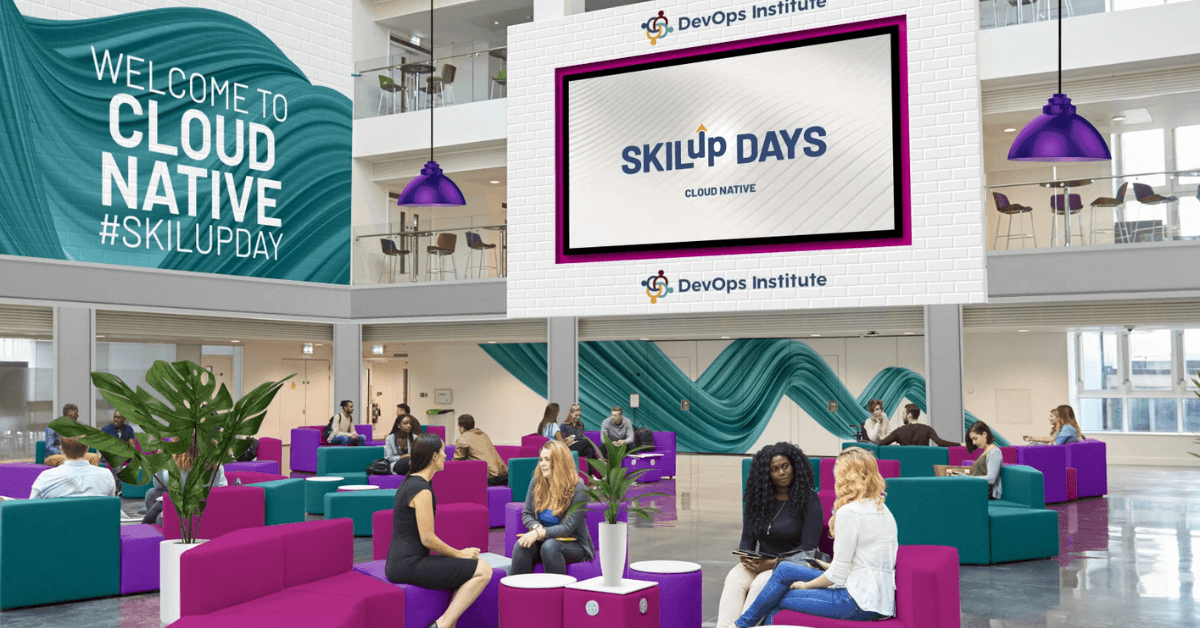
SKILup Day Cloud Native Event Recap
Recapped by Jaida Olvera
Cloud Native SKILup Day on July 21, 2022, offered insightful sessions, yoga, networking, a sponsor hall and even a DevOps-inspired mixology class!
If you missed the Cloud Native SKILup Day, we’ve got you covered with a round-up of the top themes from the sessions and conversations around this incredibly important topic.
Why Learning About Cloud Native Is Important
Adapting to new business challenges and possibilities is what cloud-native and serverless really means. Shifting away from our traditional on-premise infrastructure to meet these new demands requires a new approach to managing operations with an unfamiliar set of architectural approaches. Developers must learn to develop microservices applications and use Serverless functions while our operations teams learn to leverage a self-healing, fault-tolerant system at any scale. This SKILup Day explored various aspects of Cloud Native Development.
We’ll review key discussion points from the day in this post.
To summarize, Cloud Native SKILup Day speakers explored:
- 12 Years of Cloud Native: Lessons Learned
- What (Really) Is Kubernetes?
- Kubernetes the Easy Way: Lowering the Kubernetes Learning Curve
- Serverless and Its Hidden Costs
- CVSS: Rating The Impact of Vulnerabilities On Your Project
- Application Modernisation: Serverless Use on AWS
- AWS Cloud Map: A Communication Pattern for Microservices
Cloud and AI SKILup Day Highlights
Stefan Zier, Chief Architect at Sumo Logic, joined this SKILup Day with his session, “12 Years of Cloud Native: Lessons Learned.” Zier shared real-world experiences from the past 12 years of building, scaling, securing, and running a cloud-native SaaS application on AWS with Sumo Logic. Zier revealed what worked for Sumo Logic, what didn’t, and what patterns they’ve discovered along the way. Zier also provided a glimpse of how to build and scale a Cloud-Native application from scratch. He also explored how to manage costs along the way and some ‘gotchas’ to be mindful of for microservice architectures in the cloud.
Viktor Farcic, Developer Advocate at Upbound, set to demystify Kubernetes during his session, “What (Really) Is Kubernetes?” Farcic emphasized Kubernetes is not (only) what people think it is. He explored the architecture and provided demos to answer the “big question.” He explained that many projects are already extending Kubernetes beyond its first use case.
Kyle Rome, Sr. Director of Field Engineering at SUSE, also tackled Kubernetes during the session, “Kubernetes the Easy Way: Lowering the Kubernetes Learning Curve.” Rome gave practical advice on how to get started with running your first cluster, either manually or by using automation. Rome then did a deep dive on deploying your first application and learning the resources involved.
Marco Coulter, DevOps Institute Ambassador and Technical Evangelist at Tech Whisperer, shared real-world experience during the session, “Serverless and Its Hidden Costs.” In the session, Coulter discussed what prior sprawl and consolidation cycles have taught him. Coulter also shared suggestions to control microservice sprawl. He then gave key insights on how to prepare for serverless microservice surprises that appear in your cloud invoices.
You may also like – What Are Cloud AI Developer Services?
Sven Ruppert, Developer Advocate at JFrog, shared technical insight in his session, “CVSS: Rating The Impact of Vulnerabilities On Your Project.” He explained that the topic of security, particularly cyber security, is becoming an integral part of the daily work of a software developer, and that’s in addition to new requirements that impact daily work processes. Ruppert identified one of these complexities is the handling of CVSS values. He indicated that this can be a complex process but by using the CVSS Calculator, you can evaluate which vulnerabilities are critical for your project and analyze and calculate a CVSS value. He then explored the difference between CVSS and CVE, how you can practically use the CVSS Calculator and the significance of the environmental metric.
Pawel Piwosz, DevOps Institute Ambassador and Lead Systems Engineer at EPAM Systems, shared subject matter expertise during his session “AWS Cloud Map: A Communication Pattern for Microservices.” Nagase provided an overview of AWS Cloud Map—an easy and inexpensive communication pattern solution. He highlighted the benefits as well as how to implement the service.
Finally, Jaime Nagase, DevOps Institute Ambassador and Serverless GTM Specialist at AWS, shared key insights during his session, “Application Modernization: Serverless Use on AWS.” Nagase emphasized that serverless/modern applications, combined with DevOps, are the way forward to reduce time to market, total cost operations and achieve innovative and improved business results. He said, “Using serverless systems can mean an improvement in deployment velocity with much less burden on management operations such as organization, people/culture and technology.” He provided an overview of the three pillars of modern applications and explored the DevOps evolution inside a modern applications journey. He then demonstrated how to build new, refactored and re-platformed applications using a serverless strategy.
Get certified in DevOps Engineering Foundation
Graphic Summaries
For a quick recap, check out the sketches below:
What’s Next?
From tech-centered webinars and virtual conferences to in-person gatherings, advance your career with DevOps Institute Events: https://www.devopsinstitute.com/events/
Get DevOps Certified
Now more than ever, organizations need DevOps professionals with validated skills and knowledge to support their digital transformation. At DevOps Institute we offer certifications across several core DevOps competencies to help advance your DevOps career and grow professionally. Learn more and get certified at devopsinstitute.com/certifications

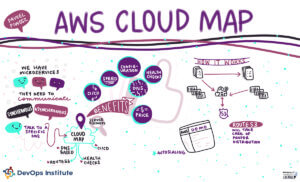
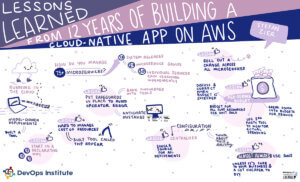
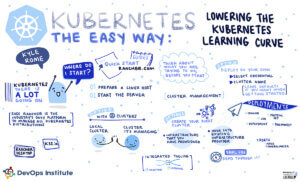
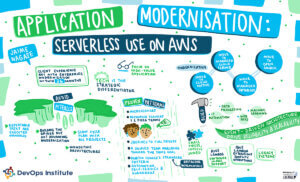
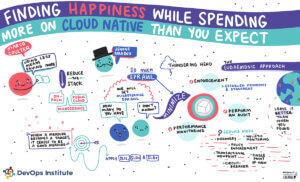
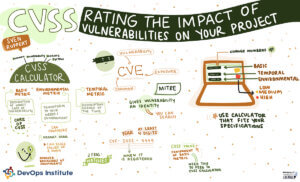
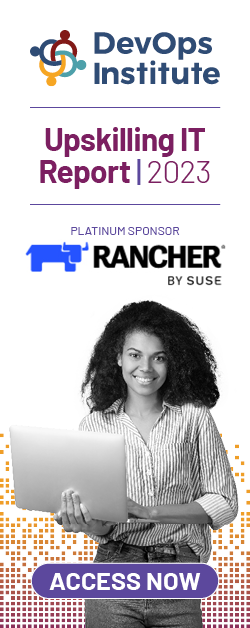
![[EP112] Why an AIOps Certification is Something You Should Think About](https://www.devopsinstitute.com/wp-content/uploads/2022/01/DOI-Human-DevOps-Digital-Podcast-Screen-600x600px-400x250.jpg)

